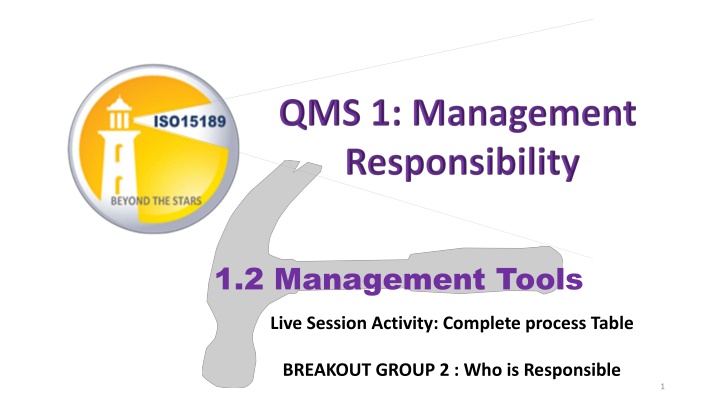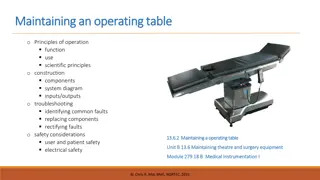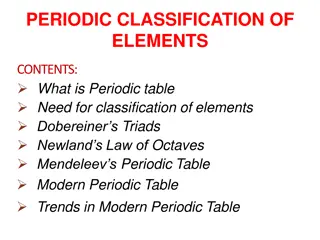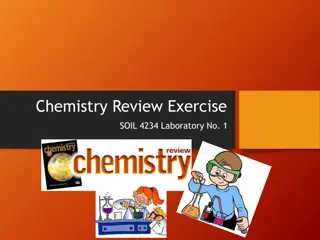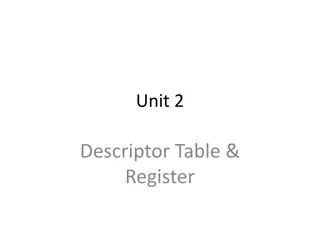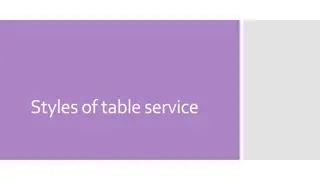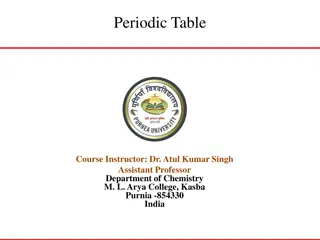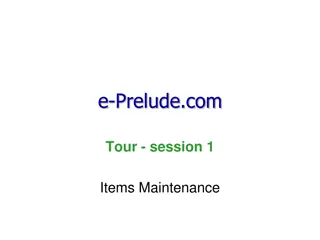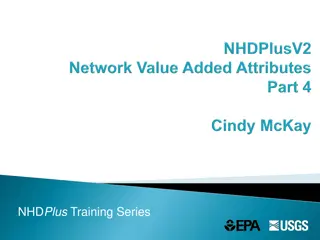Complete Process Table for Management Tools
Engage in a live session activity to complete the process table, assigning responsibilities, procedures, and identifying pitfalls for each step. Work individually to align category cards with process steps. Explore analytical steps and post-analytical tasks in a lab setting. Assess specimen collection, testing procedures, result recording, and reporting protocols for optimal laboratory operation.
Download Presentation

Please find below an Image/Link to download the presentation.
The content on the website is provided AS IS for your information and personal use only. It may not be sold, licensed, or shared on other websites without obtaining consent from the author.If you encounter any issues during the download, it is possible that the publisher has removed the file from their server.
You are allowed to download the files provided on this website for personal or commercial use, subject to the condition that they are used lawfully. All files are the property of their respective owners.
The content on the website is provided AS IS for your information and personal use only. It may not be sold, licensed, or shared on other websites without obtaining consent from the author.
E N D
Presentation Transcript
1.2 Management Tools Live Session Activity: Complete process Table BREAKOUT GROUP 2 : Who is Responsible 1
Activity: Process Mapping Part II - Complete the Table Purpose To complete the process table by identifying, for each step in the process (4 categories): What happens Who s responsible What procedures are needed Pitfalls What will you do? Work Individually to sort and order the process table cards (single category) to correspond to the process steps Complete the table, aligning the category cards with the corresponding step (Refer to ppt slides: Process Mapping Homework Part II) What will you need? One category (see above) of process table cards (ppt) (Homework: Process Mapping Part 2) Estimated time for Activity: 40 60mins minutes 2
ANALYTICAL PRE PRE- -ANALYTICAL Step WHAT HAPPENS Place process step cards horizontally to represent the order they occur in the lab and the phase of testing WHO IS RESPONSIBLE PROCEDURES NEEDED PITFALLS
ANALYTICAL ANALYTICAL Step WHAT HAPPENS Place process step cards horizontally to represent the order they occur in the lab and the phase of testing WHO IS RESPONSIBLE PROCEDURES NEEDED PITFALLS
ANALYTICAL POST POST- -ANALYTICAL Step WHAT HAPPENS Place process step cards horizontally to represent the order they occur in the lab and the phase of testing WHO IS RESPONSIBLE PROCEDURES NEEDED PITFALLS
Blood drawn from patient; Sputum, urine, stool, or other specimen is collected Prior to testing, determine if proper routine QC, reagent validation, equipment maintenance and calibration completed Clinician determines need Laboratorian interacts with patient Transfer test results into logbook; Record results accurately Requisition reviewed for proper information File & store results in a retrievable fashion; Transfer files to long term storage; Dispose of files at an appropriate time Appropriate information recorded in specimen log Note specific test requested and determine what type of sample is needed Requests reviewed for Testing priority STAT versus routine If multiple tests to be done, sequential workstations versus aliquoting Centrifugation required Send out versus in- house testing Notify Clinician of results via written report; Verbal reporting if necessary; Critical Values reporting; Assure that referral specimens are properly tracked Review test results for accuracy, legibility, & validity; Cross-checking; Assure proper quality monitoring Specimen accepted or rejected based on meeting acceptance criteria Run analysis on specimen
Laboratorian Clinician Laboratorian Patient / Laboratorian Laboratorian Laboratorian, Clerk Clinician, Clerk, or Laboratorian Laboratorian Laboratorian Laboratorian Blood: Clinician or Laboratorian Laboratorian, Supervisor Non-blood specimens: Clinician or Patient Laboratorian Laboratorian
Guidelines for STAT testing; Guidelines for multiple test from one sample; Specific SOPs for each analyte; SOP for send outs (specimens referred to other facilities for testing) Specific SOP for each analyte Specimen management; Specimen management; Criteria for specimen acceptability Client satisfaction guidelines Customer Service Ordering protocols SOP for document & record management (Including Document & Record Retention) SOP for each analyte; Phlebotomy key competencies; Specimen requirements for (venous) blood collection; Guidelines for quality checks of all log/charts for each analyzer or test Phlebotomy training checklist SOP for each analyte SOP for each analyte; Criteria for specimen acceptability Guidelines for quality checks of all log/charts for each analyzer or test Specimen management Specific SOP for each analyte
Clerical errors Inadequate information Incomplete patient data Incomplete clinical history Clerical errors Unable to retrieve information when needed Lack of adherence to document retention schedule Water or moisture damage Results not communicated in a timely fashion Results lost Critical values not reported Confidentiality breached Failure to track referral Unauthorized person ordering Inappropriate order specimens or failure to follow- up on overdue specimens Not following SOP Taking shortcuts Release of test results without validation or interpretation Inadequate cross-checking Blood - Wrong tube, incorrect amount of blood, Injury Non-blood specimens incorrect specimen or incorrect collection procedure; improper labeling Processing not performed in a timely fashion as ordered Missing some tests on a requisition with multiple tests requested Centrifuge not performed in a timely manner Send out tests not referred in a timely matter or transported inappropriately Not checking or following specimen requirements Inadequate communication to patients regarding specimen self- collection Release of test results without validation or interpretation Inadequate cross-checking Not checking or following specimen requirements Inadequate communication to patients regarding specimen self- collection QC not done or out of control, Inadequate troubleshooting or follow up of QC Improper calibration Inadequate equipment maintenance Unsatisfactory specimen Specimens with hazardous handling conditions Inadequately labeled specimen Lack of timely service Interaction not client friendly Clerical errors Analyte printout results listed in different order than logbook reporting columns Unauthorized person ordering Inappropriate order
